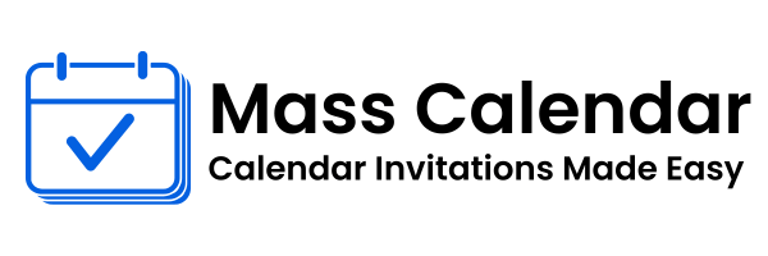How to Master Calendar Communication at Scale
In any modern organization, calendar communication is central to planning, coordination, and execution. From internal team meetings to external client reviews, sending invites at scale is a critical skill every operations or admin team must master. But when it comes to scheduling dozens or thousands of participants, many teams still rely on manual processes that waste hours.
BLOG
7/25/20252 min read


In any modern organization, calendar communication is central to planning, coordination, and execution. From internal team meetings to external client reviews, sending invites at scale is a critical skill every operations or admin team must master. But when it comes to scheduling dozens or thousands of participants, many teams still rely on manual processes that waste hours.
Why Sending Calendar Invites at Scale Matters
Think about your last major event: a company-wide training session, a regional strategy kickoff, or a global product demo. It likely involved hundreds of attendees, several time zones, and a need for absolute clarity on timing and links. That's where sending mass calendar invites in Google becomes more than a convenience it becomes essential.
The act of sending invites isn't just administrative; it’s a core part of audience engagement and time management.
What Makes Mass Invites Complex
Sending one invite is easy. Sending 1,000 that are personalized, error-free, and deliver the correct meeting link? That’s a real challenge.
Some of the most common pain points include:
Forgetting key stakeholders from the distribution list
Calendar sync failures across different platforms
Recipients receiving duplicate invites
Difficulty updating all participants when changes arise
These issues become especially pronounced when trying to send multiple calendar invites across departments or external partners.
Tips to Simplify Mass Calendar Invites
Whether you’re using Outlook, Gmail, or other enterprise platforms, here are key best practices:
Build a Clean Email List First
Before scheduling anything, clean your recipient list. Remove outdated emails and duplicates.Standardize Invite Details
Use clear subject lines, include time zones, attach documents if needed, and always provide a video link.Stagger Sends if Needed
For global teams, sending invites in batches by region or time zone can prevent overload.Use Calendar Groups Where Available
In systems like Outlook or Google Workspace, groups simplify the process of managing mass invites.Automate Updates
If you're making changes to the invite, be sure your platform allows auto-sync across all recipients this prevents confusion.
For example, when you send bulk meeting invites in Outlook, using distribution lists ensures consistency and cuts down on errors. Just make sure the group is updated regularly.
Platform-Specific Considerations
In Gmail, sending multiple calendar invites requires a few extra steps. You may need to manually copy invites or use email templates depending on your workflow. When sending mass calendar invites in Gmail, always double-check formatting, attachments, and time settings.
Likewise, if you’re scheduling a large client webinar or sales kick-off, you’ll need to ensure that bulk calendar invites in Google don’t end up in spam or go unnoticed especially when recipients are outside your domain.
Don’t Forget Follow-Ups
Sending the invite is just the first step. Use calendar features to:
Request RSVPs
Send reminders 24 hours and 1 hour before the event
Provide a backup link or dial-in number
These follow-ups ensure higher attendance rates and fewer issues on the day of the meeting.
Key Mistakes to Avoid
Sending invites with incomplete information
Not testing time zones (especially for international teams)
Forgetting to attach files or add conference links
Final Thoughts
Managing calendar communication for large-scale meetings doesn’t have to be a pain. With a clear process, the right structure, and awareness of platform capabilities, you can deliver smooth scheduling experiences whether you’re using Gmail, Outlook, or another platform.
Just remember: whether you send bulk meeting invites in Outlook or coordinate mass calendar invites in Google, attention to detail and thoughtful execution are key.
MassCalendar.in
Send Bulk & Mass Calendar Invites Instantly
CONTACT
Meetings
+44 (0) 203 916 5117
© 2025. All rights reserved.
Help?
